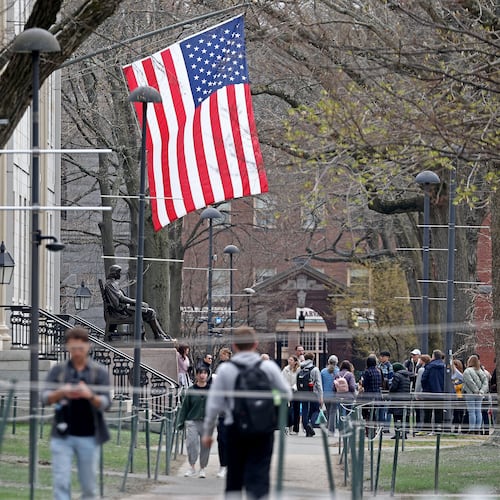As Atlanta faces critical transportation decisions with substantial cost to taxpayers, we must make sure our priorities are aligned with all of our residents who are challenged with scarce public transportation options, massive congestion and damaged streets and roads.
That is why we are thankful for Better Atlanta Transit’s call for a public debate on the wisdom of building rail transit on the Beltline that will cost more than $3 billion and take decades to build.
Our concern is that people who need transit the most will not receive it if our taxpayer dollars are tied up in such a long-term, expensive and risky venture, while those resources could be spent today on basic ways to make the system more attractive.
Credit: contributed
Credit: contributed
Simply put, there is not enough money to go around. Supporters of rail on the Beltline point out that voters supported a half-penny sales tax increase for transit expansion in 2016, which included a streetcar. However, that was part of a list of 73 transportation projects, and that tax, based upon increasing costs and other factors, is simply not enough money to fund most of the need, and therefore choices must be made.
Credit: contributed
Credit: contributed
That’s why we must first address transportation needs that require immediate attention throughout our city:
- Improve MARTA services, like clean and open bathrooms, improvements to stations and stops, and a first-class marketing program. Perhaps we should even try a free fare period to build ridership.
- Create more public transit options for people in southwest Atlanta, including senior citizens without cars, who need to live their daily lives - going to the grocery store, or work or the pharmacy.
- Find solutions for the massive congestion on the Westside and Howell Mill Road that is stifling our small businesses and residents and polluting our air.
- The Clifton Corridor, home to more than 30,000 employees, 15,500 students and 2 million patients who annually visit medical facilities in the area each year, experiences daily congestion with MARTA buses regularly getting stuck in traffic with other vehicles.
Other parts of our city are experiencing the same kind of issues that impact them every day and that must be addressed.
As for building rail on the Beltline, the more we learn about it, the more skeptical we have become.
Instead, let’s take this opportunity to be more innovative in our transit solutions. We should be focused on 21st-century solutions that embrace more micro-mobility versus light rail with its noise and safety issues.
Our view reflects a recent poll conducted for Better Atlanta Transit that showed most voters believe there are higher transportation needs across the city than building rail on the Beltline.
The poll also showed that a majority of voters in Atlanta believe rail will damage the Beltline as we know it by running through some of the city’s most beloved green spaces and destroying trees and common spaces, while not actually addressing the most pressing transportation improvement needs.
Among the poll findings:
- 53% of voters would prefer MARTA upgrade its current services rather than expand rail on the eastside. Some 43% disagree.
- 50% of voters support using the space designated for rail instead being used to widen and relieve congestion on the trail by becoming a designated lane for bikers and other small-wheel vehicles. About 24% disagree.
- 63% of voters believe that putting a streetcar on the Beltline will harm the local environment by creating pollution and removing most existing meadows and thousands of trees. 33% disagree.
- 60% of voters believe putting a streetcar on the Beltline will cause safety concerns on the Eastside trail and will take much-needed space for pedestrians and bikers. 35% disagree.
In short, putting rail on the Beltline is a solution to a problem that does not exist.
Another potentially devastating impact for Atlantans would be the disruption of expanding the streetcar to the Beltline through the Old Fourth Ward to Ponce City Market. The former Planning Commissioner, Michael Dobbins, pointed out that this would cram the two-track project through residential and small business neighborhoods into and along the Beltline right of way, causing years-long disruption that would replace the green, tree-dotted trail and park with a fenced-off rail system.
Dobbins noted this construction would severely limit cross-connectivity from one side of the Beltline to the other, which would wreak havoc on existing, stable residential and business use patterns and would cost at least a quarter of a billion dollars.
To be clear, we are big champions of transit. But we have to be wise about what kind of transit is best for each transportation project. For the Beltline, many transportation experts believe that the best transit option for preserving the Beltline is 21st century micro-mobility, such as bicycles, scooters and small-wheeled vehicles.
Rail on the Beltline isn’t necessary and it will take away the beautiful greenspace that people use every day.
The solution?
First, let’s finish the entire 22-mile pedestrian path of the Beltline. Then we can evaluate what, if any, transit options should be added. We could easily use the path designated for rail instead for bikers and other small-wheeled vehicles, easing the congestion, especially along the Eastside.
In the meantime, MARTA can put its attention and resources on improving its current services and the city can focus its priorities and taxpayers’ dollars on addressing the immediate transportation needs for all its residents, businesses and visitors.
Matt Bronfman is principal and CEO of real estate firm Jamestown, which led redevelopment of Ponce City Market. Renee Glover is an Atlanta thought leader and social entrepreneur.
About the Author
Keep Reading
The Latest
Featured




